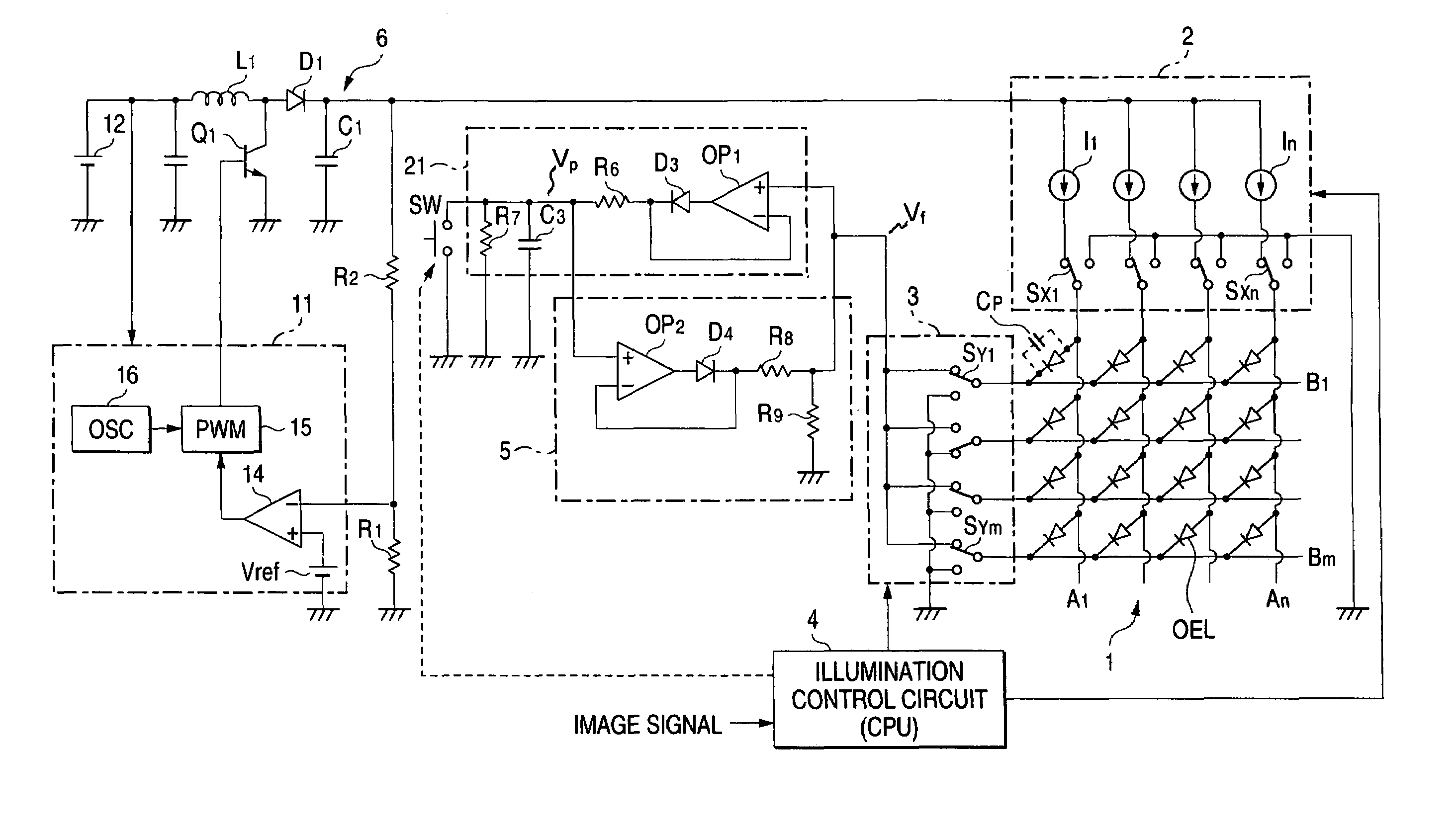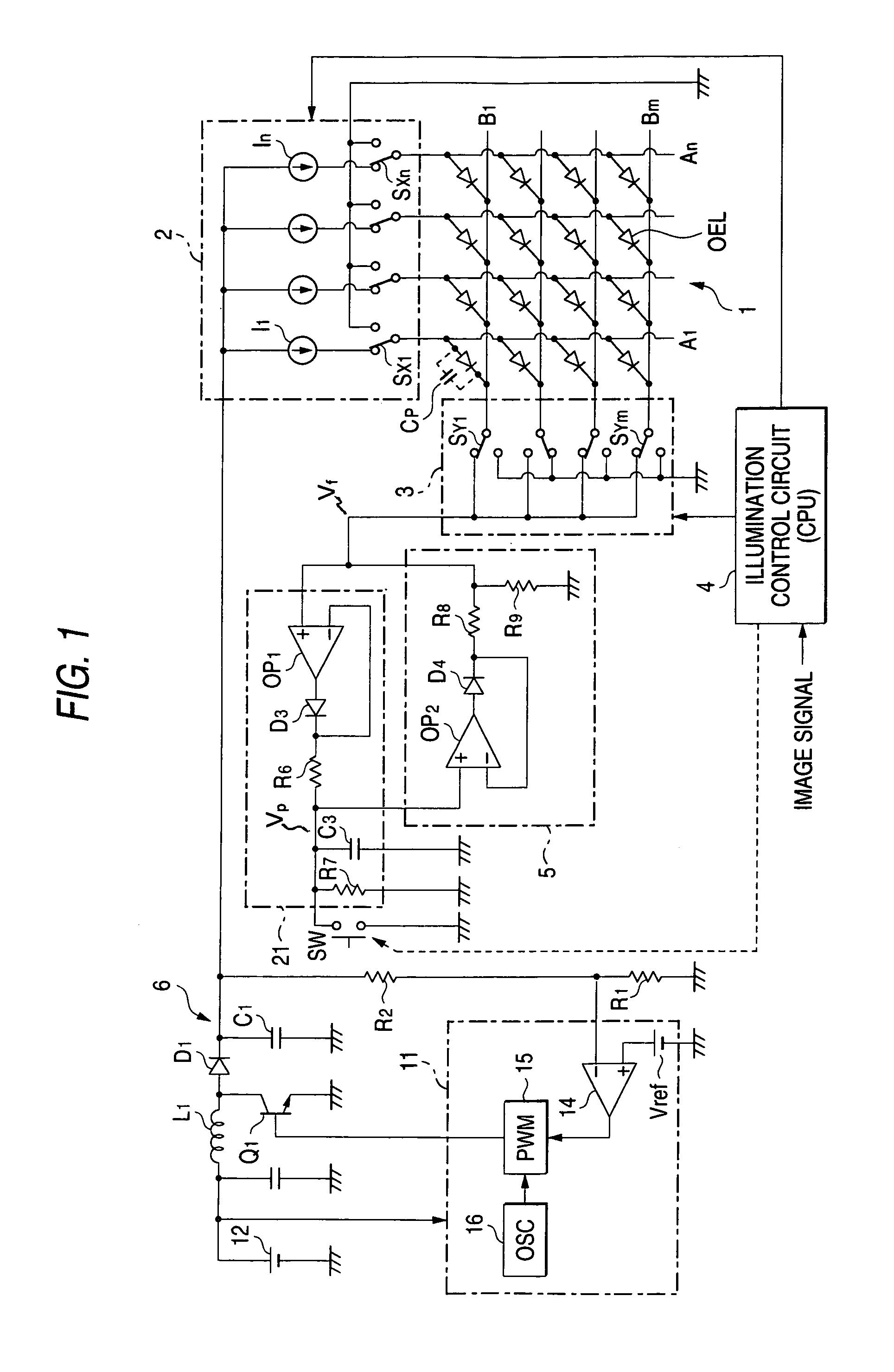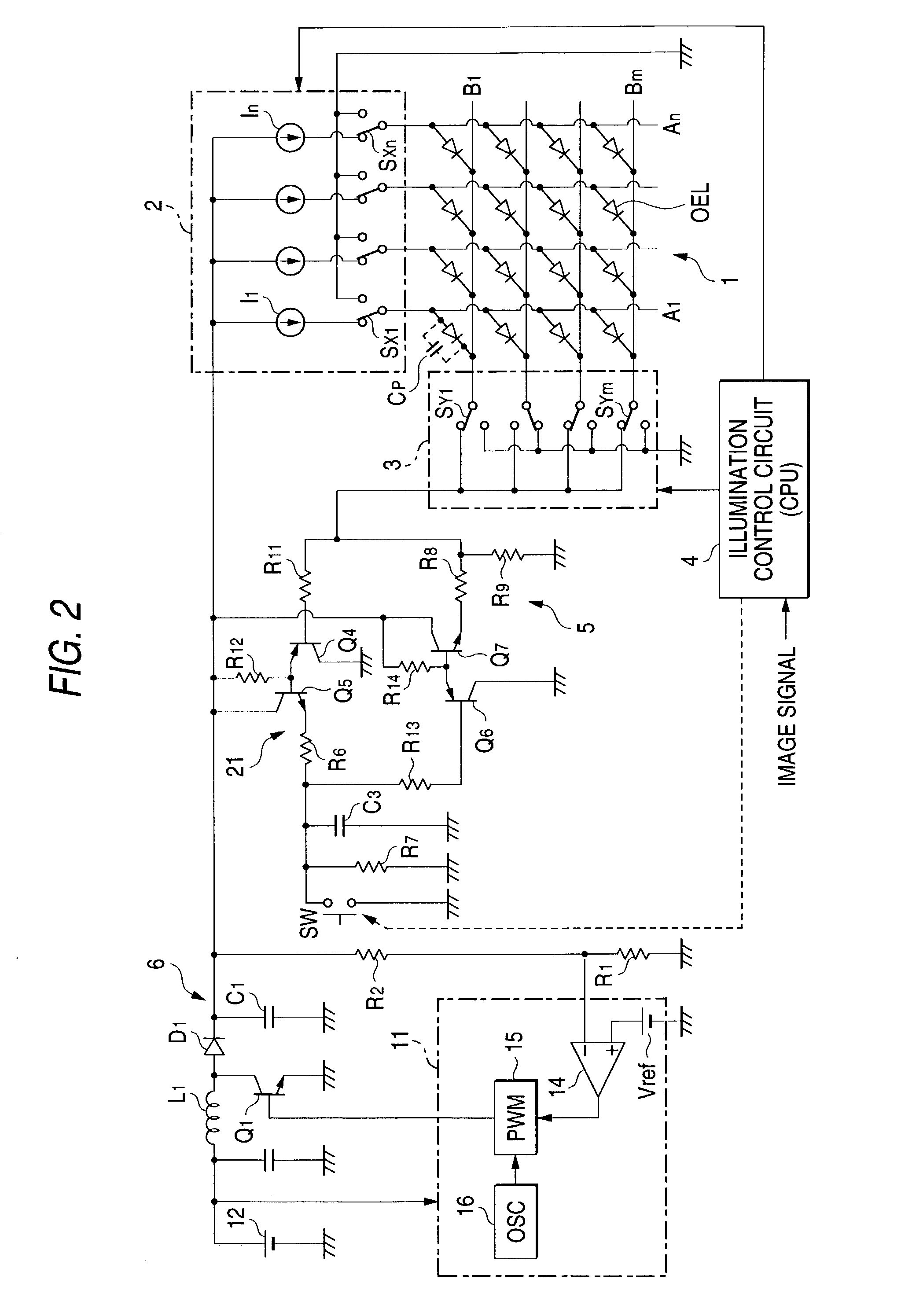Apparatus and method for driving luminescent display panel
- Summary
- Abstract
- Description
- Claims
- Application Information
AI Technical Summary
Benefits of technology
Problems solved by technology
Method used
Image
Examples
first embodiment
[0062]an apparatus for driving a luminescent display panel according to the invention will be hereinafter described by reference to FIG. 1. In relation to FIG. 1, constituent elements corresponding to those that have already been described and shown in FIG. 6 are assigned the same reference numerals, and their detailed descriptions are omitted, as required. Reference numeral 21 shown in FIG. 1 designates a peak holding circuit. Here, the peak holding circuit 21 is constituted of an operational amplifier OP1, a diode D3, a resistor R6, and a capacitor C3.
[0063]A non-inverse input terminal of the operational amplifier OP1 constitutes an input terminal of the peak holding circuit 21. By way of scanning switches SY1 through SYm in the cathode line scanning circuit 3, the non-inverse input terminal of the operational amplifier OP1 is connected to cathode lines B1 through Bm when in a non-scanning state. An output terminal of the operational amplifier OP1 is connected to an anode of the d...
third embodiment
[0083]FIG. 3 shows the driving apparatus according to the invention. The apparatus shown in FIG. 3 is identical in principal configuration with that shown in FIG. 2, and corresponding elements are assigned the same reference numerals. Hence, their detailed explanations are omitted. In the embodiment shown in FIG. 3, a boosted output from a DC-DC converter is controlled by utilization of a voltage appearing in the terminal of the capacitor C3 held by the peak holding circuit 2, thereby diminishing power loss associated with driving of the display panel 1.
[0084]In the embodiment shown in FIGS. 1 and 2, an output from the DC-DC converter 6 to be applied to the respective constant current circuits I1 through In in the anode line drive circuit 2 is controlled so as to become a substantially-constant output voltage (constant voltage) at all times, by means of, e.g., a switching regulator utilizing the PWM system. In this case, there is no alternative but to set the voltage output from the...
PUM
 Login to View More
Login to View More Abstract
Description
Claims
Application Information
 Login to View More
Login to View More - R&D
- Intellectual Property
- Life Sciences
- Materials
- Tech Scout
- Unparalleled Data Quality
- Higher Quality Content
- 60% Fewer Hallucinations
Browse by: Latest US Patents, China's latest patents, Technical Efficacy Thesaurus, Application Domain, Technology Topic, Popular Technical Reports.
© 2025 PatSnap. All rights reserved.Legal|Privacy policy|Modern Slavery Act Transparency Statement|Sitemap|About US| Contact US: help@patsnap.com



